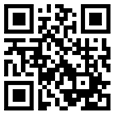0
新航道官方在线客服

阅读量:
记忆雅思词汇是考雅思的基础,也是一件难事,大量的词汇量,还要分类记忆,甚至有些词汇是比较容易混淆的,没有使用对的话,就会为写作成绩拉分。有些同学记忆这些容易混淆的雅思写作词汇,感到很头疼,就不愿意看。其实只要你用一些时间,理解这些容易混淆的词汇,就会发现分清这些词汇也不是难事,这才能有突破,分数也才能有所提升,以下内容供大家参考。
一、such as与for example的混用
我们知道,在表示举例子的时候,such as与like是完全等同的,如:Wild flowers such as/like orchids and primroses are becoming rare。
但是同学们对于Such as、for example 的把握还是不够准确。我们都知道,后者接句子前者接词语表示举例子。于是就有了下面的写法:
There is a similar word in many languages,such as in French and Italian.
这里的such as改为for example为好,因为“in French and Italian”其实是“there is a similar word in French and Italian”的简化,所以要用for example来引出例证。再来看几个类似的例子:
It is possible to combine computer science with other subjects,for example physics.
二、assume 及claim 使用不够准确
我们知道, think,assume,claim是议论文中常用引出观点的动词。在实际作文中,同学们往往认为几个词的意思是一样的,完全可以代换,所以拿过来就用。甚至还有同学把consider也拿过来与之混用。我们首先还是从定义来看这几个词的不同:
Think:to have opinion or belief about sth.
翻译为“认为”,通常接宾语从句来表达比较确定的观点。
Assume: to think or accept that sth is true but without having proof of it.
翻译为“假设、假定”,是否有事实依据是不确定的。
Claim: to say sth is true although it has not been proved and other people may not believe it.
翻译为“声称”,用这个词往往意味着不赞同紧跟其后的观点,所以很少用作‘I claim that…
Scientist are claiming a breakthrough in the fight against cancer,but in fact, ….
所以‘It is claimed that’通常翻译为“有报道称。。。”。和‘it is reported that ’的区别在于后者翻译为“据报道”,往往代表着作者赞同报告的内容,
Consider: to think about sth carefully,especially in order to make a decision.
翻译为“考虑”,一般不用作引出观点,看个例子:
We are considering buying a new car.
所以,千万不要在雅思大作文的段(观点表达段)就因为用词把握不准而导致对整篇文章的低分印象。
三、介词使用错误
1、普通介词的误用
一般表现为固定搭配错误,如常把provide sb with sth用成provide sb sth; be satisfied with用成be satisfied for等等,虽然这样的错误看似无伤大雅,但在考官眼里就是影响顺畅阅读的,当然会影响最终成绩。解决的办法简单而古老:把常见的固定搭配牢记于心,问题自然就解决了。
2、 “to”作为介词的误用
“to”最常见的用法是以动词不定式符号的形式出现的,所以同学们也已经习惯了“to do”的固定搭配。对于一些如walk to me, to the left等介词to表方向等常见用法一般也不会出现错误。但是对于与动词搭配的介词to就会经常犯错:
如:More and more students have taken to depend on their parents to make decision for them.
这里的‘take to’ means ‘to begin to do sth as a habit’其中‘to’为介词,所以后面只能接名词或相当于名词的词,如动名词。所以句中depend on 应改为“depending on”。“take to”的另一个常用用法也需要牢记:
He hasn’t taken to his new school. (这里‘take to’ means ‘to start liking sb or sth’).
Prefer A to B中的“to”也是介词,会有prefer doing sth to doing sth/ prefer sth to sth else,另外,“prefer to do sth rather than do sth”中的“to”可是真正的不定式符号。
类似的常用用法请同学们牢记:
Be used to doing
Adapt to doing
Adjust to doing
prefer doing sth. to doing sth。
Be accustomed to doing
See to doing等等,请注意平时仔细积累。
四、表“建议”的词汇后面忘记用虚拟从句
这是摘自学生雅思作文中的一个病句:
I suggest he continues his study instead of working after graduation from high school.
因为‘suggest’翻译为“建议”,所以后面的从句应该用虚拟语气,句中“continues”部分应该改为“(should) continue”。
在此提醒,一定要牢记以下常见表“建议”的词汇,而且要记住这些词接从句时要用虚拟语气:
Recommend, suggest, advise
五、compare与contrast的误用
我们先从两者的定义入手来看两者的区别。 Compare的定义为:to examine people or things to see how they are similar or different. Contrast的定义为:to compare two or more things to show the difference between them。由定义不难看出前者侧重于找到两个或多个事物的异同,而后者则侧重于它们的不同。
看个例句:
It is interesting to compare their situations to ours./It is interesting to contrast their situations to ours.
前一句翻译为:对比一下我们的情况与他们的情况会很有趣。
后一句的翻译为:我们的情况与他们的情况有很大的不同,这很有趣。
再看一个引自OXFORD ADBANCED LEARNER’S DICTIONARY的例子:
There is an obvious contrast between the culture of East and West.
The company lost $7 million in contrast to a profit of $6.2 million a year earlier.
When you look at their new system, ours seems very old-fashioned by contrast.
不难发现,Compare翻译为“与。。。相比”而contrast可译为“明显不同的是。。。”,切记这种翻译方式就不会用错彼此了。
找到好的方式方法学习,就会发现记忆这些容易混淆的词汇还是比较容易分清的。希望以上纠正的容易混淆的雅思写作词汇,大家可以以理解为前提来把这些词汇分清楚。
新航道国际教育集团提供专业的雅思培训、托福培训、GRE培训、SAT培训、剑桥青少英语培训等,为广大学子“开启英语成功之道”
